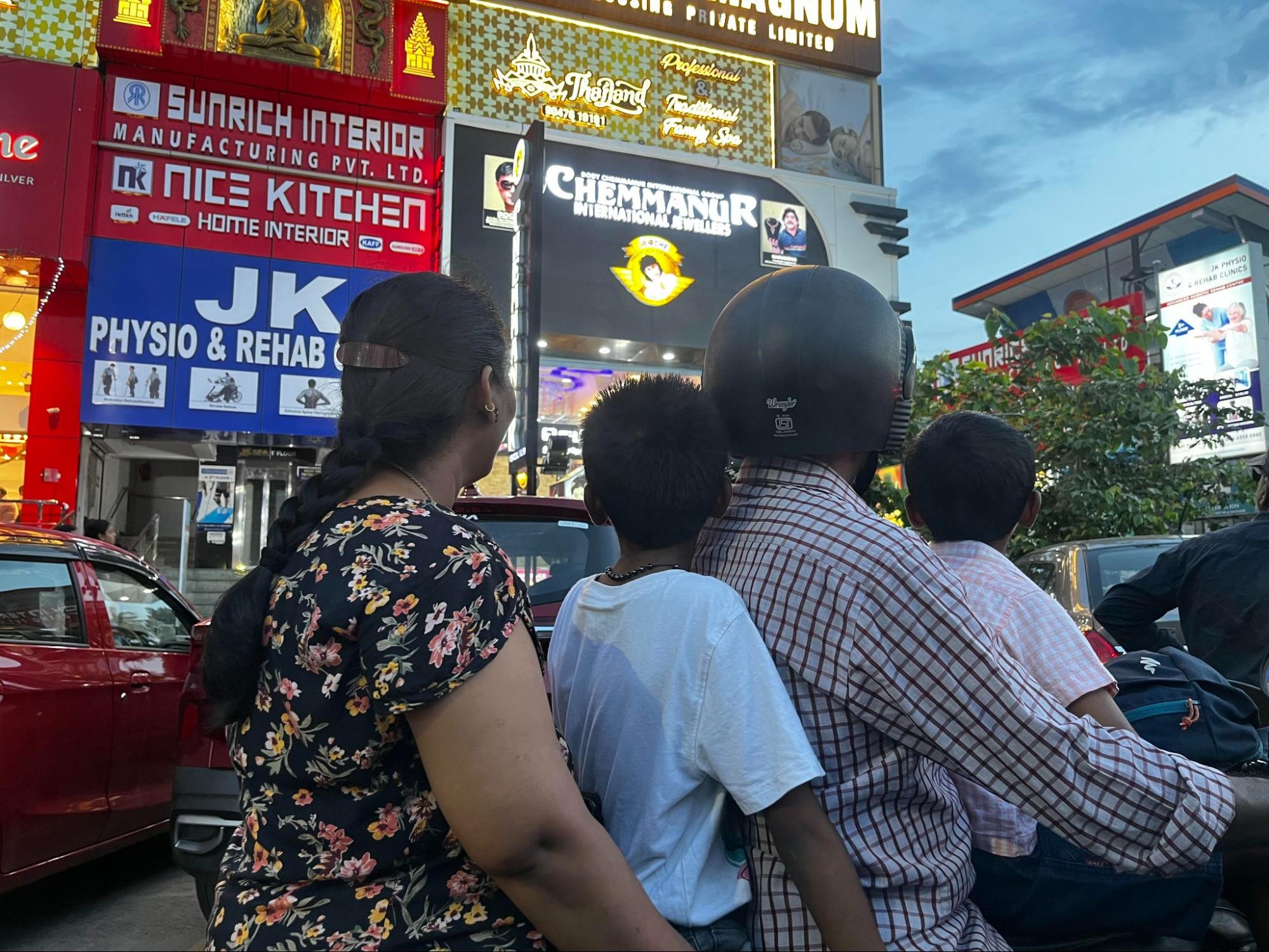A laissez-faire attitude towards safety could be said to be a defining Indian characteristic. Everytime we step out of our house, whether we are walking or driving a vehicle, we risk our lives and often the lives of other people on the road. The assumption seems to be that crashes occur to other people and that somehow miraculously we will not come to harm in spite of our foolhardy behaviour.
This is abundantly clear in how children travel on two-wheelers in India. From newborns to young children perched precariously on handlebars, the two-wheeler is the family vehicle of choice.
The Motor Vehicles Act, even in 1988, made it clear this was illegal. The law clearly states that only two people are allowed on a two-wheeler. However, this has always been a difficult thing to enforce in a country like India where many families find the two-wheeler the only convenient and affordable option of mobility. While public transport should be the solution, the poor condition of public transport networks and the public perception of public transport as infra-dig makes the two-wheeler the obvious choice.
Safety on two-wheelers
The issue though is that two-wheelers are not safe, especially for children, given the current traffic and road conditions in India. Two-wheeler riders and pillion riders accounted for nearly half the road crash deaths (44%) in the country according to the Ministry of Road Transport and Highways’ report, Road Accidents in India 2022. In 2018, they accounted for 39% of deaths. The report does not break down the data to show how many children (i.e below 18 years) on two-wheelers (or any other vehicle category) are killed. We do, however, know that in 2022, 9528 children in road crashes compared to 7764 deaths in 2021.

Image: The family vehicle | CAG
The law does require children above four to wear a helmet, but with helmet compliance among adults so poor, it is hardly plausible to think compliance among children will be any better. Certainly, helmet compliance for children is not enforced.
In February 2022, MoRTH issued a gazette notification under Section 137 of the Motor Vehicles Act, 1988, that children below 4 on two-wheelers will need to wear a safety harness that attaches them to the adult and wear a crash helmet that fits their head or a bicycle helmet that meets European standards ([ASTM 1447]/ [European (CEN)BS EN 1080/BS EN 1078). This is seen as a temporary measure until the government’s Bureau of Indian Standards (BIS) frames standards.
This is interesting because other countries don’t have helmet standards for children that young. Why? Because they are not allowed on two-wheelers to start with. The UK requires the pillion rider to be able to sit by themselves without support and for their feet to reach the foot rest. Clearly very young children do not meet these criteria so the question of helmets doesn’t arise. But for reasons mentioned earlier, carrying babies on two-wheelers is common in India and a blind eye is turned to this.
The idea of harnessing the child to the adult is unique. Again this, if implemented, India will likely be the first country to try this out. Is it safe? Does it help? There is no data to prove or disprove it. No tests have been done globally. So it remains to be seen how India works this out.
What then can we do?
While the government tussles with this rather thorny problem, what can be done in the meantime? Unfortunately, there are no easy short term solutions. Ideally small children shouldn’t be on a two-wheeler - so then families need better mobility options. In the long term and from a larger sustainability perspective, the answer is to improve public transport systems so that it becomes the first choice (of everyone, not just young parents who do not own a car). Public transport is also in desperate need of better PR which will give it that ‘cool’ factor.
Add new comment